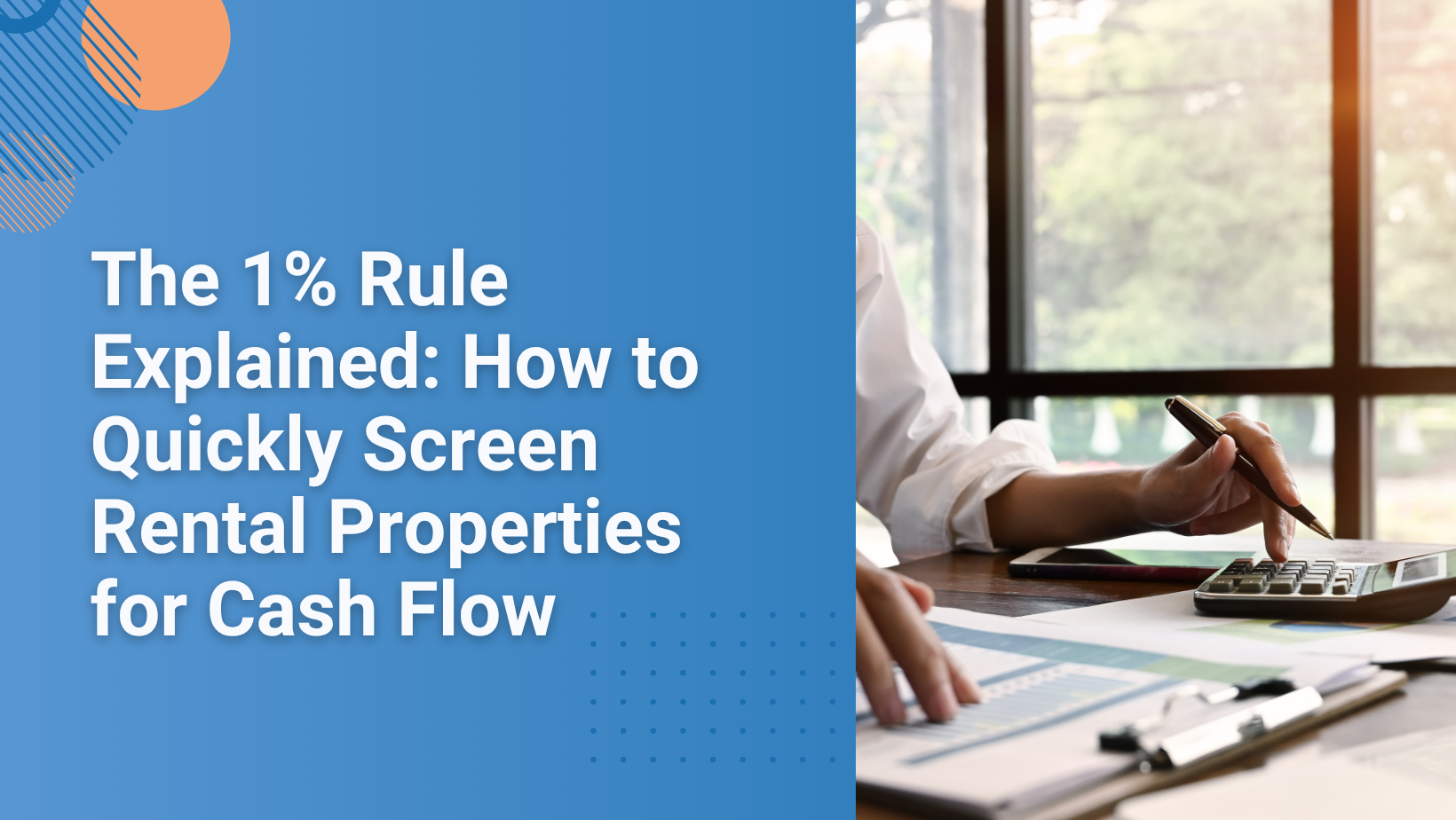
Does a Property’s Age Matter for Investing?

Updated July 30, 2021
Pros and Cons of Choosing A New – or Old – House for an Investment Property
It's an ongoing debate among real estate investors: "Should I buy or build a new rental property?" or "Should I invest in an older property and plan to renovate?" Let's dig into the pros and cons of new vs. old to determine how much a property's age matters for your real estate investment performance. For this discussion, "new" refers to properties that are:
- Brand-new
- Newly built
- Under construction now
- Less than ten years old
An "older" rental property is one constructed be-fore 2010, typically in an established neighborhood. Because homes tend to settle over time, in the first ten years after construction, you could see signs that the house is settling or shifting, such as cracks in the drywall, cracks in the foundation, and heaves in the driveway or sidewalk. In most (but not all) cases, if a house is going to shift, it is more likely to happen in the first ten years – and shifting may also be evident in other homes in the neighborhood built around the same time. Active real estate investors who flip or renovate a property before listing it on the rental market will tell you that it's only a little money either way. You pay a premium price for a new home or sink additional dollars into renovations for an older home you buy for a lower price.
There are upsides and downsides to both property types.
Why invest in a new rental property?
Imagine a brand-new house where everything – appliances, carpet, paint, etc. – is clean and gleaming., That signature "new carpet and paint" smell still hangs in the air when you walk in the door. Many renters genuinely appreciate a home where appliances have never been used. This type of renter also likes a new bathroom where there are no questions about who cleaned it in the past, and whether they did a good job. Everything – from electrical, plumbing, HVAC, windows, siding, roof to all other structural and system elements – has not been used, and all systems and components are still under warranty. These factors make a new rental property seem like the perfect investment. You can potentially rent it at a higher rental rate, and you should have no maintenance issues to take care of for years, especially if your tenants stay for the long term.
Stay connected
Get rental market insights delivered straight to your inbox.
Why invest in an older rental property?
Let's change the scene now to imagine an established neighborhood with mature trees, larger back yards, bus stops, and where the homes and streets show a little individual character. You've found an older rental property. While you may need to invest in some updates for the house, both inside and out, it's hard to compete with the look of an established neighborhood. With large old trees, good walkability to schools, hospitals, retail centers, and transit (depending on where you purchase, of course), an older neighborhood offers convenience and community. Many potential tenants see value in a beautiful yard, a pleasant outdoor cooking setup, and space for children or pets to play in the yard.
Of course, both types of property come with disadvantages too.
Cons of investing in new rental property
Cost is the most significant issue when it comes to investing in a new property. Whether you build it or purchase it within 5-10 years of construction, a new house still holds a retail premium. This premium originates with the developer, who sells lots to the home builders; the builders need to mark up their homes to cover all costs (including their carrying costs for any lots they hold for some time before building) and make a profit. This means these new homes sell at retail. Most investors stay away from properties selling at retail prices because they are looking for a deal.
You can certainly make a new house perform profitably as a rental if you have all of your expenses built into the purchase price. You can recoup that initial investment in a reasonable amount of time. This number is both subjective and arbitrary since it's based on your personal goals for the investment, but expect any new property to come with a higher price tag.
A new rental property will typically be found in a less-established area. New houses often have landscaping and trees that haven't grown up enough to provide any privacy. There's almost no landscaping in some cases, and the grass hasn't even started to grow, and you may have just a gravel driveway. Generally, newer neighborhoods have homes with smaller yards, spaced more closely together than you'll find in older neighborhoods.
New neighborhoods with better landscaping and larger lots will feature more expensive homes. Most typical new neighborhoods – the ones more likely to attract a property investor – get built further into the outskirts of town, not necessarily close to schools, shopping, gas, hospitals, or transit – at least in the short term. While the home may be brand-new and beautiful, renters will consider their commute time. You (and your tenants) may have to deal with the noise, dirt, and inconvenience of ongoing construction in the neighborhood if the lots are not already full.
With a new home, the biggest expense to plan for is potential maintenance. Yes, a lot of items are under warranty, but plenty are not. The foundation will settle over time – the question is, how much, and will it affect the structural integrity of the house? If it settles a lot, you could have both internal and external damage to fix. (We will assume you rent to excellent tenants who leave the house in tip-top condition, so you won't have to contend with any significant tenant damage.)
Even with the best tenants in place, they may have pest control problems, weather-induced damage, and other repairs that come with everyday living. Investing in a home inspection can help you determine how much of your monthly rental income you'll need to set aside for future repairs and replacements.
Of course, the older rental property may not be a bed of roses either and has its disadvantages.
Cons of investing in older rental property
As you can imagine, an older home shows more wear-and-tear, both inside and out. Those structural and system items that look so good in a new home can start to show their age in an older property. It's almost certain that an old home will demand more maintenance, at least in the beginning.
With a home inspection, you will know which systems need maintenance or replacement before a tenant moves in, such as older electrical work or corroded plumbing. A fresh coat of paint for the entire interior, including closets and painted cabinets, will eliminate the lead-based paint issue found in houses constructed before 1978. You may also find asbestos insulation in the walls, attic or ceiling, pipe coverings, and older tile flooring. Consult with an asbestos remediation company about the best way to handle your specific situation.
The home's exterior can show problems with cloudy or broken windows, curling shingles on the roof, broken siding, or peeling paint (especially on the south- or west-facing walls), and a cracked driveway, sidewalk, or foundation. You can fix any and all of these problems fairly cost-effectively, but a long list could add to a sizable amount. When you buy an old house with appropriate margins built-in, you can take care of those issues upfront, and see cash flow once you get a tenant.
All real estate investors have different goals, priorities, and tolerance for risk. Your goals will determine whether you lean toward assembling a portfolio of all new properties or hunt for deals among older properties. Many seasoned investors will tell you that a balanced mix of new and old can also earn great results over time. It's essential to take a good look at that home inspection report and know what's going on in your rental market if you plan to own either type of property. Buy reasonably and rent right, and you'll cash flow right on schedule.
This article was written by the Rentometer Content Team. The Rentometer Blog features fresh takes and insights on rental housing topics, services, and technology.
Stay connected
Get rental market insights delivered straight to your inbox.

 LinkedIn
LinkedIn
 Facebook
Facebook
 Email
Email
 Twitter
Twitter
 Quickly evaluate current rents with QuickView™ Rent Estimates
Quickly evaluate current rents with QuickView™ Rent Estimates

